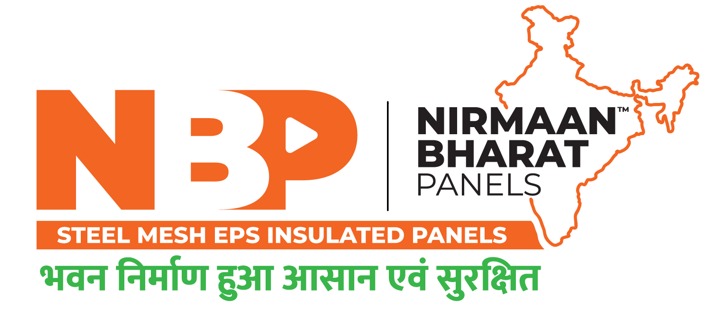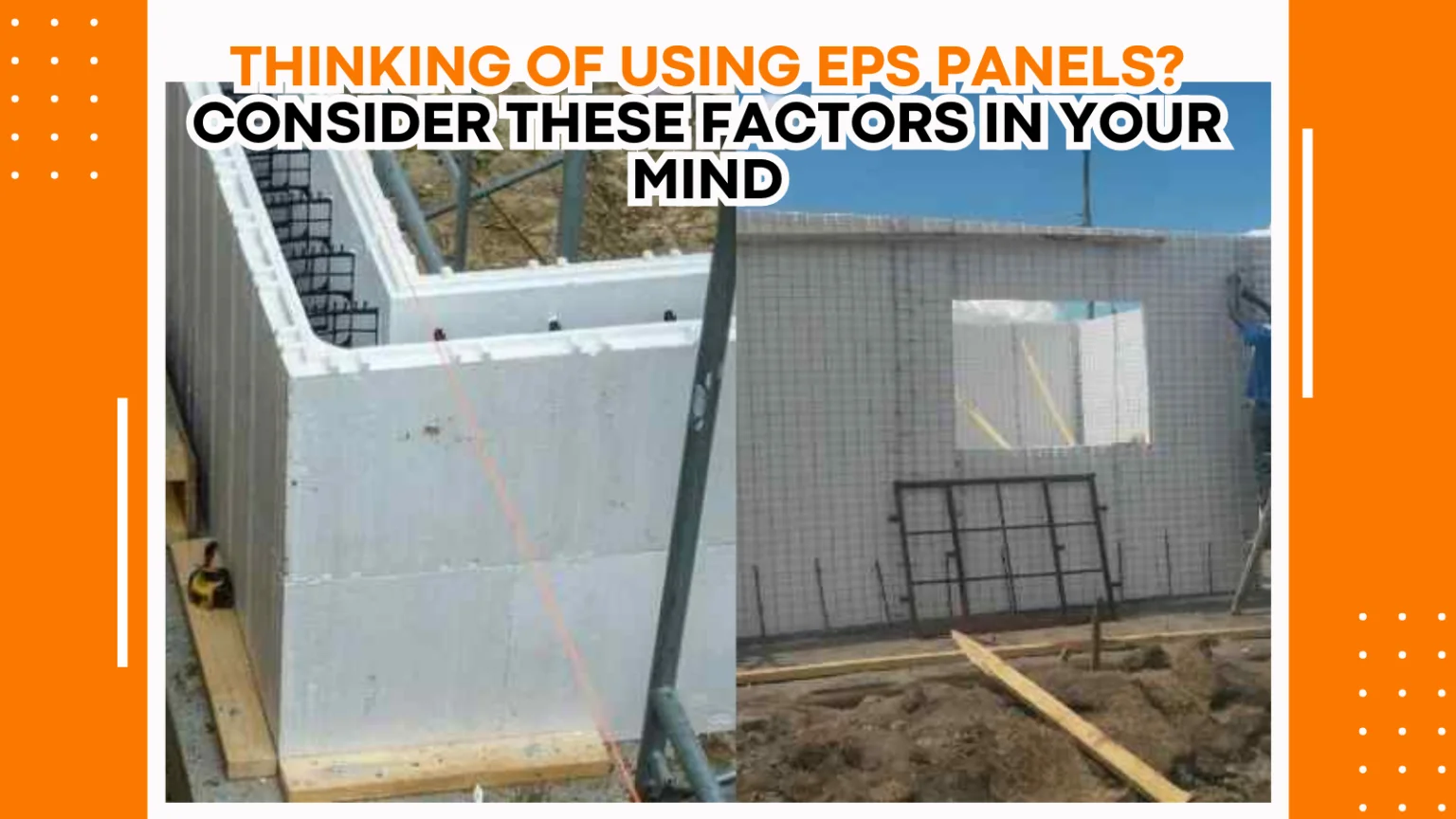Expanded Polystyrene Top Quality EPS Panels have gained popularity in construction due to their lightweight nature, excellent insulation properties, and cost-effectiveness. As you consider incorporating EPS panels into your next building project, it’s essential to evaluate several factors to ensure they meet your needs and expectations. Here are five crucial considerations to keep in mind when thinking about using EPS panels.
Table of Contents
Toggle1. Thermal Insulation and Energy Efficiency
Thermal Insulation Performance: Quality EPS Panels are renowned for their superior thermal insulation properties. They provide high R-values, which indicate a material’s effectiveness at resisting heat flow. This means EPS panels can significantly reduce heat transfer, keeping indoor spaces warmer in the winter and cooler in the summer. This enhanced insulation capability helps maintain a comfortable indoor climate and minimizes the need for heating and cooling systems.
Energy Efficiency Benefits: The improved thermal performance translates directly into energy savings. Buildings with high-quality EPS Panels can achieve energy savings of up to 40% compared to those built with traditional materials like brick or concrete. Over time, these energy savings can lead to substantial reductions in utility bills, making EPS panels a cost-effective choice in the long run.
Real-World Example: In a recent residential project in Pune, the use of EPS panels for walls and roofs resulted in a 35% reduction in energy consumption for heating and cooling, demonstrating their effectiveness in real-world applications.
Consideration: When evaluating top-quality EPS Panels for thermal insulation, ensure they meet local building codes and standards for R-values. Consider the climate of your location and the specific insulation needs of your building to maximize energy efficiency.
2. Cost Implications: Initial Investment vs. Long-Term Savings
Initial Costs: Top Quality EPS Panels typically have a higher initial material cost compared to traditional construction materials like brick or concrete. On average, EPS panels cost between ₹2,490 to ₹2,600 per square meter, while traditional materials range from ₹2,075 to ₹2,500 per square meter. Installation costs for EPS panels are also relatively lower, making the overall initial investment competitive.
Long-Term Savings: Despite the higher initial cost, Top Quality EPS Panels offer significant long-term savings through reduced energy consumption and lower maintenance needs. Buildings using EPS panels can see annual energy savings of approximately ₹41,500, compared to around ₹24,900 for those using traditional materials.
Real-World Example: In a commercial office building in Mumbai, the decision to use EPS panels led to a notable reduction in annual energy costs and a quicker return on investment due to the lower operational expenses associated with energy savings.
Consideration: When assessing the cost implications, weigh the higher initial investment against the long-term savings on energy and maintenance. Analyze your budget and financial goals to determine if EPS panels align with your project’s economic strategy.
3. Durability and Maintenance
Durability: EPS panels are known for their durability and resistance to environmental factors. They are resistant to moisture, mold, and pests, which enhances their longevity and reduces the need for frequent repairs. This durability makes EPS panels suitable for a variety of climates, including humid and rainy regions.
Maintenance Needs: The low maintenance requirements of EPS panels are a significant advantage. They generally require minimal upkeep compared to traditional materials, which can be prone to issues such as cracking, water damage, and pest infestation.
Real-World Example: In a residential complex in Chennai, the use of top-quality EPS Panels contributed to a 50% reduction in maintenance costs compared to conventional brick structures, thanks to their resistance to moisture and pests.
Consideration: Evaluate the environmental conditions of your construction site and the potential impact on building materials. EPS panels offer durability and low maintenance, but it’s essential to ensure they are installed correctly to achieve these benefits.
4. Environmental Impact and Sustainability
Eco-Friendly Aspects: EPS panels are considered an eco-friendly building material due to their insulation efficiency, which reduces energy consumption and associated carbon emissions. Moreover, EPS panels are frequently produced from recyclable materials, supporting sustainability initiatives.
Lifecycle Analysis: The environmental impact of EPS panels should be assessed throughout their lifecycle, including production, usage, and disposal. While EPS panels are beneficial in reducing energy consumption, their production process does involve the use of petrochemicals. However, their long-term energy savings typically offset the initial environmental costs.
Real-World Example: A green building project in Bangalore utilized EPS panels to achieve a LEED certification, demonstrating their role in supporting sustainable building practices and reducing the overall carbon footprint of the construction.
Consideration: When evaluating your project’s sustainability goals, take into account the environmental advantages of using EPS panels. Assess the overall lifecycle impact and how EPS panels contribute to reducing the building’s carbon footprint.
5. Building Codes and Regulations
Compliance with Standards: Before using EPS panels, ensure they comply with local building codes and regulations. Building codes vary by region and may have specific requirements for insulation materials, fire safety, and structural integrity. To ensure both safety and performance, EPS panels must comply with these standards.
Certification and Testing: Verify that the EPS panels you choose are certified and tested according to industry standards. Certification ensures that the panels meet safety and performance requirements, providing peace of mind regarding their suitability for your project.
Real-World Example: In a government office project in Delhi, EPS panels were selected after thorough verification of compliance with local building codes and certification requirements, ensuring the project met all necessary safety and performance standards.
Consideration: Investigate and familiarize yourself with the local building codes and regulations that apply to your project. Ensure that EPS panels meet all required standards and certifications to avoid potential issues during construction and occupancy.
6. The Time Factor
Construction Speed: EPS panels can greatly shorten construction time in comparison to traditional building methods. Their lightweight nature allows for quicker handling and installation, which accelerates the overall building process. Unlike conventional brick or concrete construction, which often requires time-consuming curing and drying periods, EPS panels are ready for immediate use once installed.
Labour Efficiency: The straightforward installation process leads to reduced labour costs and less time spent on site. Fewer workers are needed, and the installation process is less labour-intensive. This efficiency can be especially beneficial for projects with tight deadlines or those aiming to reduce construction costs.
Real-World Example: In a commercial complex project in Hyderabad, the use of EPS panels reduced the construction timeline by approximately 20%, allowing the project to be completed ahead of schedule and within budget.
Consideration: Evaluate your project timeline and consider how EPS panels can impact construction speed. Faster installation can lead to quicker occupancy and earlier return on investment.
7. The Upper Floor Slab Factor
Load-Bearing Capacity: EPS panels are commonly used for walls and roofs, but their application in upper-floor slabs requires careful consideration. While EPS panels are lightweight, their load-bearing capacity must be evaluated to ensure they meet structural requirements. Proper engineering and design are crucial to ensure that the panels can support the intended loads without compromising safety.
Thermal Insulation in Slabs: EPS panels used in upper floor slabs can provide excellent thermal insulation, reducing heat transfer between floors and enhancing overall energy efficiency. This insulation helps in maintaining a comfortable indoor climate and reduces the need for additional heating or cooling.
Real-World Example: In a multi-story residential building in Bangalore, EPS panels were used in upper-floor slabs to improve thermal insulation between floors, resulting in enhanced energy efficiency and increased comfort for residents.
Consideration: Consult with structural engineers to assess the suitability of EPS panels for upper-floor slabs in your project. Ensure that they meet all structural and safety standards while providing the desired insulation benefits.
8. The Cost-Saving Factor
Material Costs: EPS panels generally have a higher initial material cost compared to traditional building materials like brick or concrete. However, this higher upfront cost can be offset by the long-term savings achieved through energy efficiency and reduced maintenance.
Energy Savings: One of the most significant advantages of EPS panels is their ability to reduce energy consumption. Their high R-values lead to significant savings on heating and cooling expenses. Over time, these savings can outweigh the initial investment, making EPS panels a cost-effective choice in the long run.
Maintenance Costs: EPS panels are recognized for their durability and minimal maintenance needs. They are resistant to moisture, mold, and pests, which reduces the need for frequent repairs and maintenance. This durability contributes to further cost savings over the lifespan of the building.
Real-World Example: A commercial office building in Mumbai experienced a 30% reduction in annual energy costs and a significant decrease in maintenance expenses after switching to EPS panels, resulting in considerable long-term savings.
Consideration: Analyze the total cost of ownership, including initial material costs, installation, energy savings, and maintenance, to determine if EPS panels provide a favourable return on investment for your project.
9. The Weight Factor
Structural Implications: One of the key benefits of EPS panels is their lightweight nature. This characteristic reduces the load on the building’s foundation and structural elements, potentially lowering construction costs and enabling the design of more flexible architectural solutions.
Transportation and Handling: The reduced weight of EPS panels simplifies transportation and handling during construction. This ease of handling can lead to lower transportation costs and less risk of damage during delivery and installation.
Real-World Example: In a residential development project in Chennai, the lightweight EPS panels allowed for quicker handling and installation, resulting in reduced transportation and labour costs and faster project completion.
Consideration: Assess the impact of the lightweight nature of EPS panels on your project’s structural requirements and overall construction process. Consider the benefits of reduced load on foundations and the ease of transportation and handling.
10. The Look & Feel Factor
Aesthetic Flexibility: EPS panels offer versatility in design, allowing for a range of finishes and architectural styles. They can be easily covered with plaster, paint, or other finishing materials to achieve the desired aesthetic. This flexibility makes EPS panels suitable for various design preferences and building types.
Interior Comfort: The excellent insulation properties of EPS panels contribute to a comfortable indoor environment. By minimizing heat transfer, EPS panels help maintain stable indoor temperatures, thereby improving the overall comfort and livability of the space.
Real-World Example: In a high-end residential project in Delhi, EPS panels were used to achieve a modern aesthetic with smooth finishes, while their insulation properties ensured a comfortable and energy-efficient living environment.
Consideration: Consider the aesthetic options available with EPS panels and how they align with your design vision. Evaluate how the panels’ insulation properties contribute to interior comfort and overall quality of life in the building.
Read Also: Building for Tomorrow The Cost-Saving Benefits of EPS Panels in Construction
The Takeaway
EPS panels offer numerous advantages, including improved thermal insulation, faster construction times, reduced energy and maintenance costs, and design flexibility. However, to fully realize these benefits, it’s essential to consider factors such as construction speed, load-bearing capacity, cost implications, weight, and aesthetic flexibility. By evaluating these aspects, you can make an informed decision on whether EPS panels are the right choice for your project.
Conclusion
EPS panels offer numerous advantages, including superior thermal insulation, long-term cost savings, durability, and environmental benefits. However, it is crucial to consider factors such as initial costs, maintenance needs, environmental impact, and compliance with building codes when evaluating their suitability for your project.
By carefully analyzing these considerations, you can make an informed decision about whether EPS panels are the right choice for your construction needs. Incorporating EPS panels into your building project can lead to enhanced energy efficiency, reduced operational costs, and a sustainable approach to construction, ultimately contributing to a more comfortable and eco-friendly living or working environment.
If you’re contemplating the use of EPS panels for your construction project, take the time to consult with industry experts and conduct a thorough cost-benefit analysis. Understanding the impact of EPS panels on various aspects of your project will help you make an informed decision that aligns with your goals and budget. For more information on EPS panels and their applications, or to request a consultation with a construction professional, reach out to our team today. Let’s work together to build a more efficient, cost-effective, and aesthetically pleasing future.


